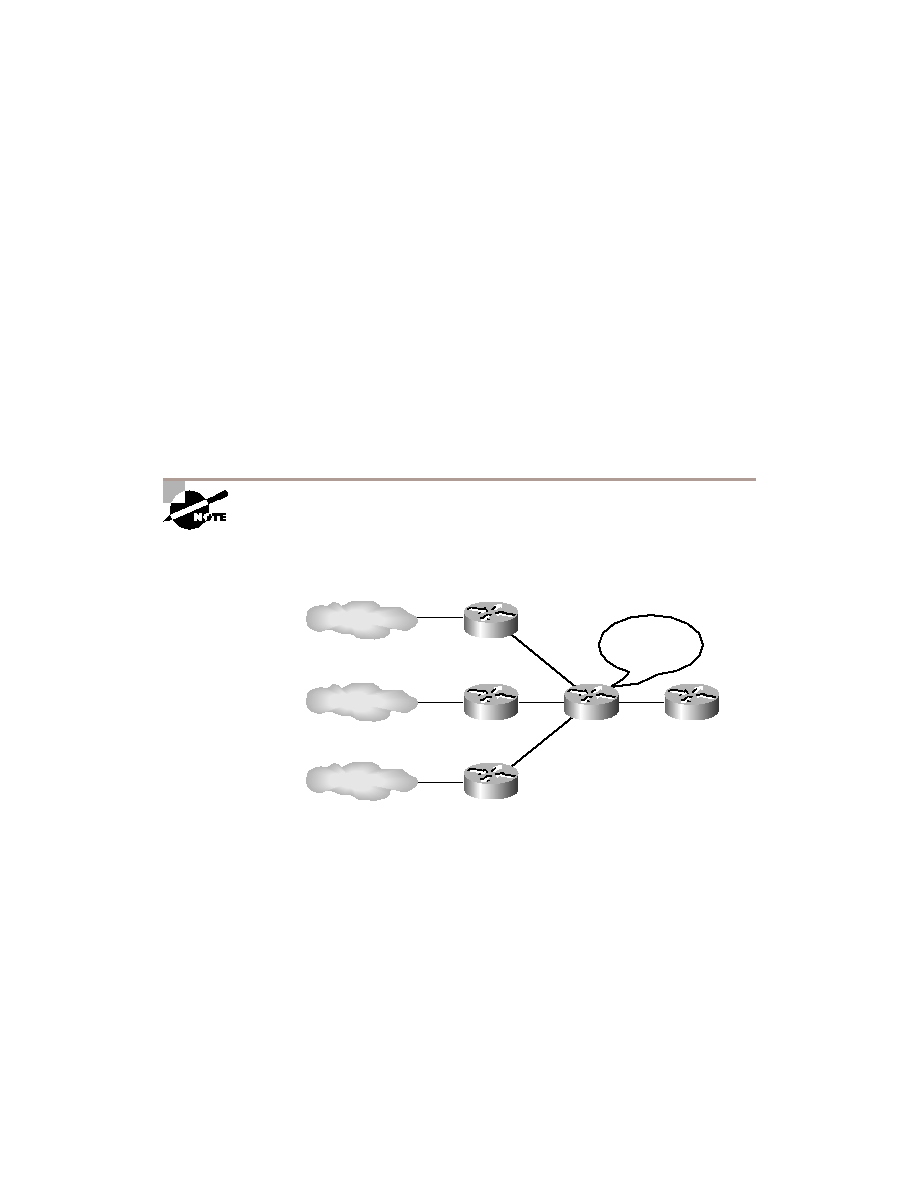
the concept of route summarization. So, what is it, and why do we need it?
On very large networks, there may be hundreds or even thousands of indi-
vidual networks and subnetworks being advertised. All these routes can be
very taxing on a router's memory and processor.
to get to the major network (e.g., 172.16.0.0/16) and let another router take
it from there. A router's ability to take a group of subnetworks and summa-
rize them as one network (i.e., one advertisement) is called route summari-
zation, as shown in Figure 3.5.
making multiple changes to its routing table, due to instability within a par-
ticular subnet. For example, let's say that we were working on a router that
connected to 172.16.2.0/24. As we were working on the router, we rebooted
it several times. If we were not summarizing our routes, an external router
would see each time 172.16.2.0/24 went away and came back. Each time, it
would have to modify its own routing table. However, if our external router